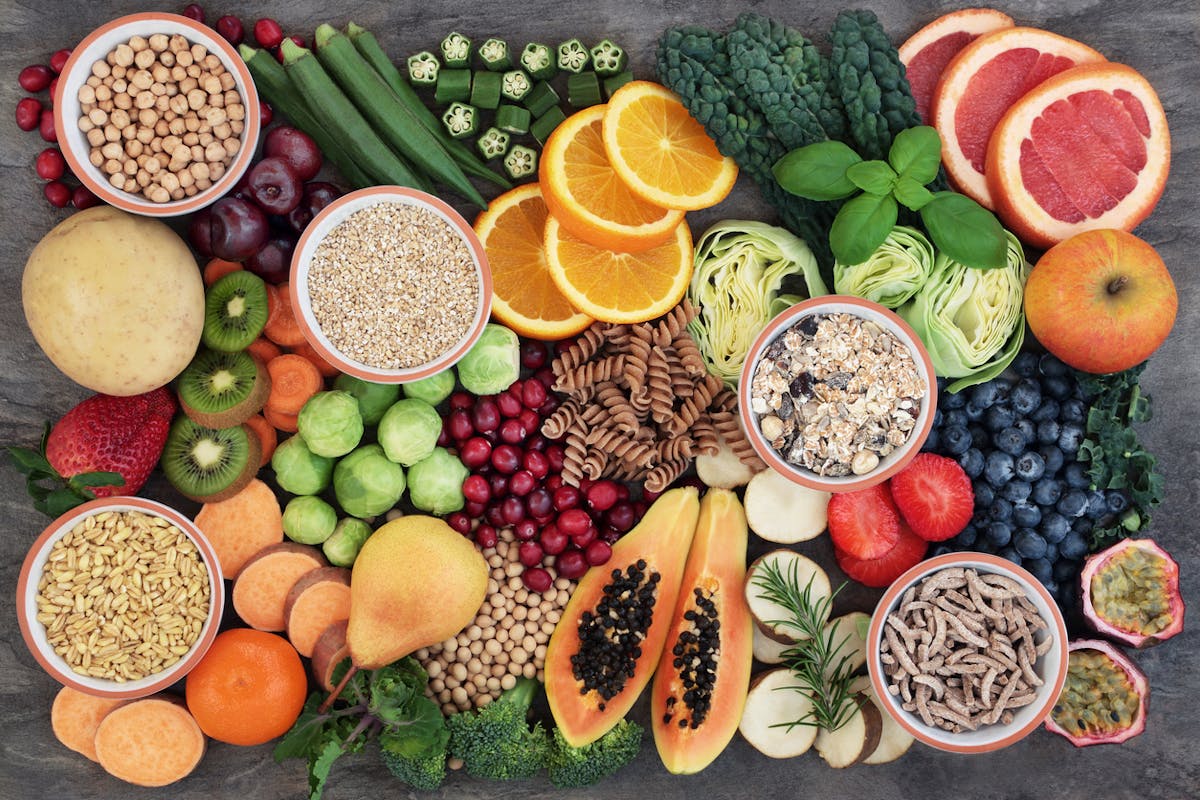Have you ever wondered if you got enough fiber during the day? Probably not. And yet, these substances are essential to ensure proper functioning of our body.
They are considered as indigestible carbohydrates, but are very different from other carbohydrates, and much less caloric. Don’t let the term “indigestible” mislead you. Although fiber is not digestible, it is very useful for the body.
Definition: what are fibers? What are they for ?
Dietary fiber is actually part of the carbohydrate family. They play an important role because they help prevent many pathologies (colon cancer, type 2 diabetes, cardiovascular diseases, etc.). First, by arriving intact in the intestines, they feed friendly bacteria and contribute to the health of the microbiota.
Low in calories, they help regulate transitby increasing the volume of stools in cases of constipation and by capturing water from the digestive tract in cases of diarrhea.
Finally, they reduce the absorption of toxins and bad fats and slow down the assimilation of carbohydrates. Not to mention that they help us to feel full and to better control our appetite. They therefore also participate in weight management.
What is good for the intestine is also good for the brain : according to certain scientific studies, the consumption of fiber would help reduce the effects of stress and anxiety.
What are the best fibers for the intestines?
These two types of dietary fiber are useful and complementary.
Soluble fiber
By forming a viscous gel on contact with liquids, soluble fibers (mucilages, pectins, etc.) slow down the assimilation of carbohydratesreduce the absorption of fats and cholesterol and gently regulate transit.
Soluble fiber is found mainly in the fruits (citrus fruits, apple, pear), oilseed (almond, walnut, hazelnut, pistachio, etc.),oats and the legumesformerly called dried vegetables (lentils, chickpeas, etc.).
Insoluble fiber
These fibers (cellulose, lignin, etc.) act like sponges. They allowincrease stool volume and stimulate intestinal contractions. However, in excess, they can irritate.
Insoluble fiber is found mainly in wheat bran, Whole grains (rice, breads or wholemeal pastas), carrotsTHE green vegetables, there saladTHE algae and the pome fruit (raspberry, redcurrant, etc.).
What foods are rich in fiber?
All plants contain soluble and insoluble fiber, in varying proportions.
Fruits, vegetables, legumes, seeds, oilseeds and whole grains are rich in fiber
Insoluble fibers are largely in the majority in whole grains, seeds, oilseeds and legumes; fruits and vegetables contain approximately two thirds of insoluble fiber (especially in the skin and seeds) for one third of soluble fiber.
- Wheat bran : 42 g of fiber per 100 g.
- Chia seeds : 34.4 g of fiber per 100 g.
- Flax seeds : 27 g of fiber per 100 g.
- Cooked flageolets : 16.5 g of fiber per 100 g.
- 70% dark chocolate : 12 g of fiber per 100 g.
- Flaky muesli : 11.4 g of fiber per 100 g.
- Almonds with skin : 10.2 g of fiber per 100 g.
- Nuts : 9.7 g of fiber per 100 g.
- Raw green lentils : 8.45 g of fiber per 100 g.
- Artichokes : 8.3 g of fiber per 100 g.
- Cereal and seed bread : 7.7 g of fiber per 100 g.
- Prunes : 7.35 g of fiber per 100 g.
- Wholemeal bread : 7.3 g of fiber per 100 g.
- Blackcurrant : 5.8 g of fiber per 100 g.
- Cooked peas : 5.5 g of fiber per 100 g.
- Sweet potato puree : 4.5 g of fiber per 100 g.
- Cooked green beans : 4 g of fiber per 100 g.
- Cooked wholemeal pasta : 3.3 g of fiber per 100 g.
- Cooked leeks: 3.2 g of fiber per 100 g.
- Cooked wild rice : 1.8 g of fiber per 100 g.
- Apple : 1.4 g of fiber per 100 g.
Source: Ciqual food table
How much fiber per day? How much ?
25 to 30 g per day for an adult, less for children (15 g at 10 years old). Current French consumption (18 to 22 g per day) is insufficient.
To meet our needs, simply follow the dietary guidelines of the National Nutrition and Health Program (PNNS). Consume:
- At least 5 servings of fruits and vegetables per day;
- At least twice a week of dried vegetables;
- More seeds and oilseeds (up to a handful per day);
- And whole grains rather than refined.
In the context of chronic diseases, like functional colopathy also called irritable bowel syndrome, this intake can be reviewed. Below, video explanations from Dr Pauline Jouët, gastroenterologist.
How to eat more fiber every day?
A few tips allow us to integrate foods rich in fiber into our dishes, starters and desserts every day:
- Eat less meat and more legumes. This solution not only saves money, but also preserves the environment;
- Have the puree reflex. This technique is a huge success with children, but also works for adults too. Blend your beans, soy, cauliflower, squash or lentils and add them to your sauces, dishes and soups. These purees can replace cream and cheese, which also reduces the calorie content of the dish;
- Focus on seeds to boost your dishes, soups and salads. You can grill them to add a touch of crunch and try different mixtures by adding aromatic herbs as well.
You can also add wheat bran to your morning dairy products or cut dried fruits to your dishes or mixed salads…
How to improve your digestive tolerance?
The best is to vary the fruits and vegetables, peel them and mix them raw and cooked, cooking softens the fibers. And D'introduce whole grains in stages. Must also soak the dried vegetablesand cook them well before consuming them, rather in small quantities.
Find all our fiber-rich recipes in our dedicated section.
